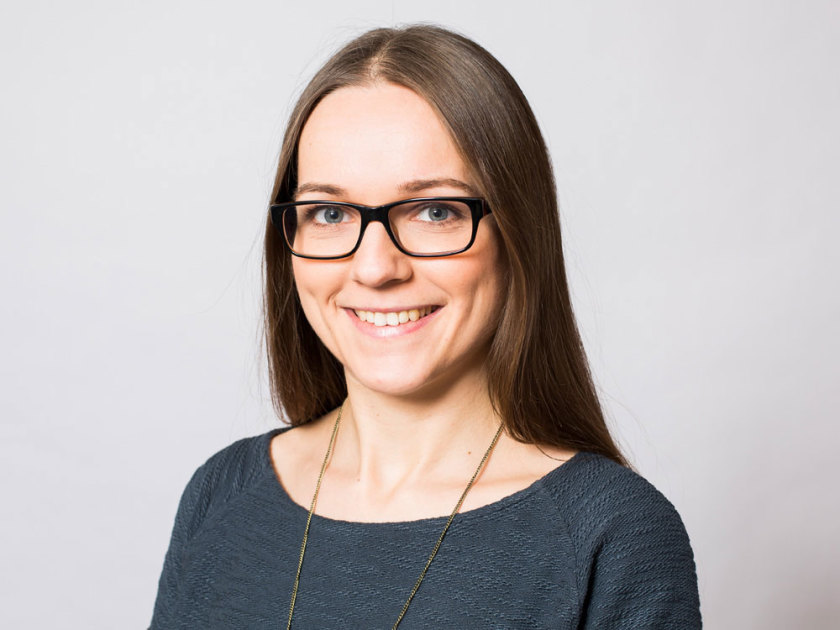Helmholtz Virtual Institute MiCo: Article selected as journal highlight for 2017

First author is the mathematician Sibylle Bergmann, whose PhD work is funded by MiCo. © WIAS
The Helmholtz Virtual Institute MiCo offers a platform through which the Helmholtz-Zentrum Berlin conducts joint research with universities and other partners on the topic of microstructures for thin-film solar cells. The journal Modelling and Simulation in Materials Science and Engineering recently selected an article produced through MiCo as the highlight of those published by the journal during 2017.
The paper deals with the modelling of liquid/solid interface kinetics in silicon, the most common material used for solar cells. First author is mathematician Sibylle Bergmann, a researcher at the Weierstrass Institute who is funded by the Helmholtz Virtual Institute MiCo (Microstructure Control for thin-film solar cells).
The scientific article was evaluated by the reviewers as outstanding and was retrieved over 900 times, a particularly high number for a technical article from this subject area. The publication is available through Open Access.
Published in Modelling and Simulation in Materials Science and Engineering: „Anisotropic Solid–Liquid Interface Kinetics in Silicon: An Atomistically Informed Phase-Field Model“; S. Bergmann, K. Albe, E. Flegel, D. A. Barragan-Yani & B. Wagner
DOI: 10.1088/1361-651X/aa7862
More information on Helmholtz Virtuelle Institut "Microstructure Control for thin-film solar cells"
arö
https://www.helmholtz-berlin.de/pubbin/news_seite?nid=14820;sprache=en
- Copy link
-
New instrument at BESSY II: The OÆSE endstation in EMIL
A new instrument is now available at BESSY II for investigating catalyst materials, battery electrodes and other energy devices under operating conditions: the Operando Absorption and Emission Spectroscopy on EMIL (OÆSE) endstation in the Energy Materials In-situ Laboratory Berlin (EMIL). A team led by Raul Garcia-Diez and Marcus Bär showcases the instrument’s capabilities via a proof-of-concept study on electrodeposited copper.
-
Green hydrogen: A cage structured material transforms into a performant catalyst
Clathrates are characterised by a complex cage structure that provides space for guest ions too. Now, for the first time, a team has investigated the suitability of clathrates as catalysts for electrolytic hydrogen production with impressive results: the clathrate sample was even more efficient and robust than currently used nickel-based catalysts. They also found a reason for this enhanced performance. Measurements at BESSY II showed that the clathrates undergo structural changes during the catalytic reaction: the three-dimensional cage structure decays into ultra-thin nanosheets that allow maximum contact with active catalytic centres. The study has been published in the journal ‘Angewandte Chemie’.
-
Solar cells on moon glass for a future base on the moon
Future settlements on the moon will need energy, which could be supplied by photovoltaics. However, launching material into space is expensive – transporting one kilogram to the moon costs one million euros. But there are also resources on the moon that can be used. A research team led by Dr. Felix Lang of the University of Potsdam and Dr. Stefan Linke of the Technical University of Berlin have now produced the required glass from ‘moon dust’ (regolith) and coated it with perovskite. This could save up to 99 percent of the weight needed to produce PV modules on the moon. The team tested the radiation tolerance of the solar cells at the proton accelerator of the HZB.
